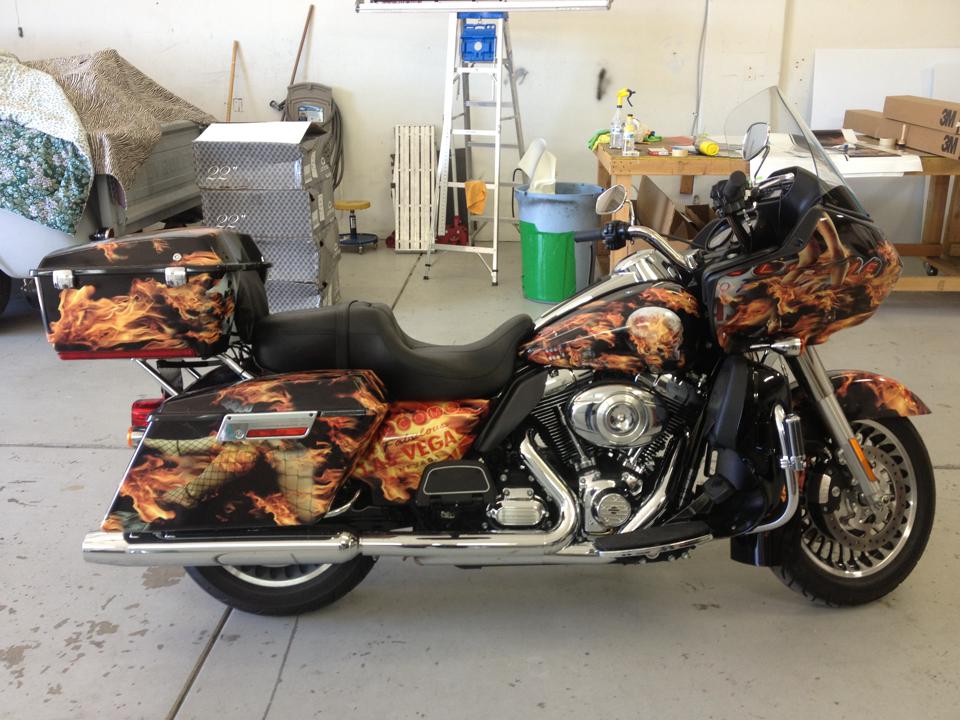TW200
Fun fact about the TW200: it was the first motorcycle ever to reach the North Pole, way back in 1987.

TW200 Specs
| Engine Type | 196cc air-cooled SOHC 4-stroke, 2 valves |
| Compression Ratio | 9.5:1 |
| Carb | Mikuni 28mm |
| Ignition | CDI |
| Transmission | Constant-mesh 5-speed, multiple wet clutch |
| Drive Type | Chain |
| Fuel Capacity / Tank Size | 1.8 gallons |
| Fuel Economy | 78 mpg |
| Front Forks | Telescopic Fork with 6.3 inches of travel |
| Rear Shock | Single sock with 5.9 inches of travel |
| Front Brake | Single 220mm disc |
| Rear Brake | 110mm Drum |
| Front Tire | 130/80-18 |
| Rear Tire | 180/80-14 |
| Length x Width x Height | 82.3 in x 32.3 in x 44.1 in |
| TW200 Seat Height | 31.1 inches |
| Wheelbase | 52.2 inches |
| TW200 Ground Clearance | 10.4 inches |
| TW200 Weight | 278 pounds |
The year is 1987: Bon Jovi’s “Livin’ on a Prayer” is crushing the charts, A Nightmare on Elm Street is keeping children awake in their beds at night, and the world of motorcycling is about to be forever changed with the introduction of the Yamaha TW200.
Who could have known that this chunky little trail bike, with its tiny engine, chubby rear tire, and no-frills design would come to define an entire genre of motorcycles to come?
We’re talking about none other than the infamous “farm bike,” of course, the underappreciated workhorse of offroading, built to pull work duty all week and haul ass (relatively speaking, of course) all weekend.
The TW200 celebrates its 36th straight year of production this year, yet it’s remained almost entirely unchanged for longer than many of us have been alive. So what makes the TW200 such a cult classic?
Here’s our take on the little dual-sport that could.
Bike Description & History
Truth be told, if you put the original 1987 TW200 side-by-side with the latest 2023 model, you’d have a tough time telling the two apart. Aside from the obvious ’80s-era graphics and questionable color choices, the number of changes made to the TW200 over the years can be counted on one hand.
The electrical system was upgraded in 1988, and then a few “modern” updates were introduced in 2001 including a front disk brake, a CV carburetor, and the addition of a trip meter to the otherwise spartan cockpit. There have been a few odds and ends tweaked along the way, but aside from these updates, all models of TW200 are more or less identical.
Why mess with success? Between the tractor-like engine that’s as reliable as an anvil, a low seat height that puts even the shortest rider’s feet firmly on the ground, and fat ATV tires that stick like glue to everything from vertical walls to rutted-out mud puddles, the TW200 is the definition of a go-anywhere, do-anything machine.
So much so, in fact, that the TW200 became the first motorcycle to ever reach the North Pole back in 1987. Piloted by Shinji Kazama over 44 days and over 1,200 miles, the achievement was stunning, and as of this writing, hasn’t been repeated since (technically Kazama’s journey was powered by a two-stroke 250 engine, but who’s keeping score?).
Regardless of the year, pretty much all TW200s (that’s short for “Trail Way,” by the way) look, feel, and ride the same. The suspension is as soft as an old couch and the brakes are alarmingly weak, but the slow-turning engine and massive knobby tires will get you pretty much anywhere, as long as you’re not in a hurry.
TW200 Top Speed
Speaking of speed, a lot of variables play into any motorcycle’s top speed. On small displacement bikes like the Yamaha TW200, those variables are magnified considerably due to the relatively low power output of the engine referenced in the spec sheet above.
Elevation, rider weight, temperature, wind, and incline can all impact your TW200’s top speed for better or worse.
Assuming you’re working with a bone stock TW200 on a flat road in clear conditions, however, the TW200 top speed is around 65mph.
The good news is that you can pick up a few extra mph with a few simple mods, so let’s dive into those next.

Best TW200 Mods
Looking to get a little extra performance out of everyone’s favorite farm bike? As is often the case with simple single-cylinder engines, a few quick and easy TW200 mods are all you need to coax some extra pep of the T-dub’s pint-sized powerplant.
The first and most popular is modifying the air intake. Yamaha designed the TW’s airbox to be as airtight as possible to minimize the amount of dust and debris making its way into the engine, but unfortunately, they choked up the airflow in the process.
Many owners simply drill a few holes into the airbox to get some extra air flowing, but this leaves the engine vulnerable to accelerated wear, so we generally don’t recommend it.
The smart move here is to pick up a few of Uni’s universal 1” air box vents, which are pre-filtered inlets that can easily be installed by drilling standard 1” diameter holes into the side of the air box.
From there, most owners will opt to upgrade the internals of the TW200’s stock carburetor, which typically involves swapping out the jets, the fuel needle, and the slide spring for improved responsiveness and smoother throttle action.
Remember, this is a small engine that’s built for reliability rather than performance, so while the mods above will provide a noticeable difference in performance and throttle response, nothing is going to turn your TW into a fire-breathing dual sport.
Realistic expectations would yield somewhere around one extra horsepower, which should add a couple of extra MPH to your top speed, but won’t exactly have you cruising in the fast lane on the interstate either.
Of course, if you prefer to leave it fully stock, the quickest and easiest way to change the TW200’s performance is with a change of sprockets: by going either a tooth higher in the front or a few teeth lower in the rear, you’ll be able to coax a little more top speed from this trail pig. Drop a tooth up front or add a few in the rear, on the other hand, and you’ll get a little better acceleration at the cost of top speed.
Here is one of our favorite sprocket choices for the TW200: 45T Rear Sprocket
One rider said this of that sprocket, “this 45 tooth sprocket makes the TW200 so much more usable. Still plenty of low-end.”
Best TW200 Accessories
Ok, so we’ve established that the TW200 performance is relative, but there are other ways to improve a motorcycle than horsepower. In the case of the T-dub, three simple accessories can completely transform the machine.
First and foremost are the footpegs. We’ll never understand why Yamaha chose to put child-sized footpegs on a street-legal dual sport (presumably for cost savings), but for most riders, this is the first TW200 accessory you’ll want to buy.
We prefer a large platform peg with plenty of teeth for proper offroad duty, and for most riders, this means a set of IMS Super Stock pegs, which are plug-and-play for the TW on the stock peg brackets.
Once the pegs are sorted, we recommend turning your focus to the handlebars. The stock handlebars on the Yamaha TW200 are made from cheap steel, which means they’re prone to bending even from the lowest speed tip-overs. You’ll want to replace this with a proper aluminum bar, either within the stock ⅞” bar size for simplicity/cost savings, or with an upgraded 1-⅛” fat bar conversion for the bling factor.
We also recommend adding a set of handguards while you’ve got your bars off, especially if you plan to take your TW200 offroading. There’s nothing fun about being whipped across the knuckles by branches or breaking a lever every time you drop the bike, so don’t skip this one.
The other major TW200 accessory needed to get this farm bike trail-ready is a proper skid plate. Yes, the TW comes with a skid plate from the factory, but it’s about as thick as a tin can and half as durable. Both Moose Racing and Ricochet make plug-and-play upgrades out of thick aluminum, so you’ll never have to worry about flattening those frame rails again.
Frequently Asked Questions About the TW200
A TW200 can go around 65mph.
Yes, the TW200 is a street-legal dirt bike.
The Yamaha TW200 is made to be an easy-to-ride bike that can help out on the farm, go off-road, or on-road. Unfortunately, because it does so many things, it doesn’t do any of them great, but it’s still a fun little machine to rip around.
The TW in Yamaha TW200 stands for “Trail Way.”
The weight limit for the Yamaha TW200 is about 600 lbs.
No, a TW200 will not run without a battery.
Yes, the TW200 has electric start.
A TW200 has about 16 horsepower.
Yes, the TW200 is fun. It doesn’t do any one thing particularly great, but it is still a fun little machine to rip around on.
Yes, the TW200 has a carburetor.
The gas tank on a Yamaha TW200 can hold up to 1.8 gallons.
No, the TW200 does not have an O-ring chain.
You can get about 140 miles on a tank of gas with a TW200.



